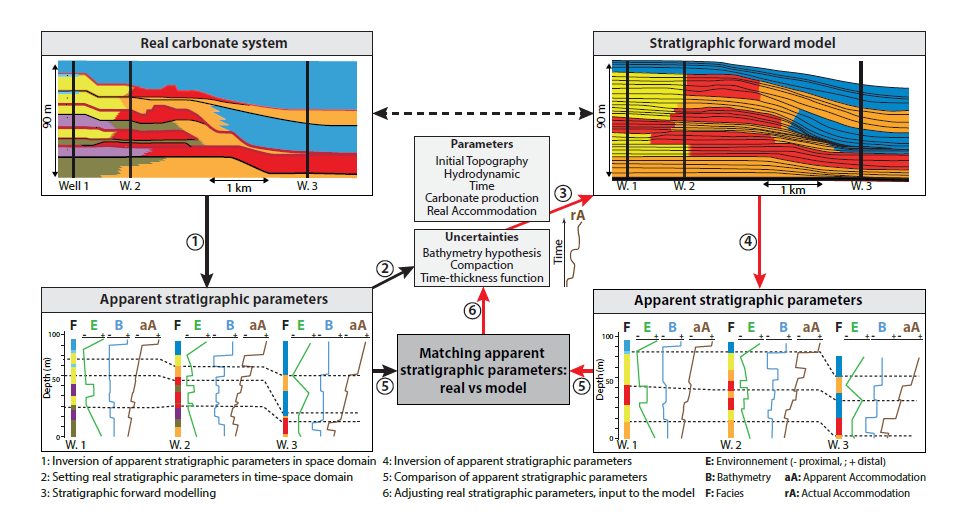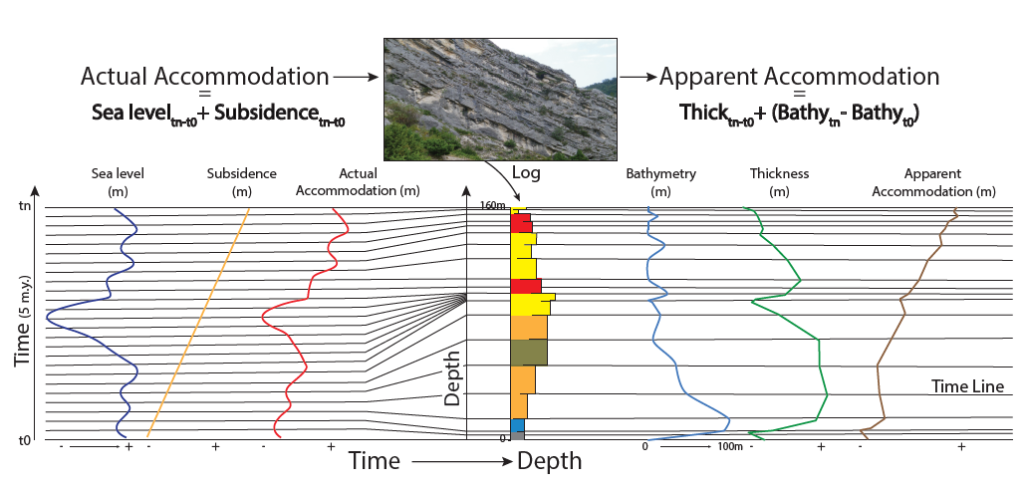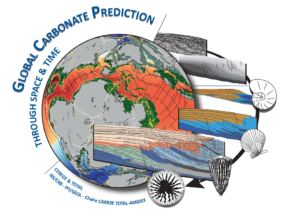Hot scientific topics, the foundation of geology and more …, both the historical library and the geological clock of the Earth System, how time records in carbonate sedimentary rocks. These records are often incomplete or poorly preserved with various time-thickness scales. That’s why we propose, in our last paper on the subject https://carbonatechair.cerege.fr/aapg-bull-2020-strati/, to distinguish apparent from real parameters. Apparent stratigraphic parameters are preserved in the sedimentary rocks and can be directly measured or observed (i.e.. thickness, fossils or absolute aged) and real or actual parameters are interpreted or calculated and are supposed to represent the processes that operated during the complete and continuous time interval (i.e. sea level changes, subsidence or sedimentary fluxes). Many authors in the past have thinking about this fundamental scientific problem, how time is recording in sedimentary series, but in practice geologists who are prone to avoid complexity and quantification and are excellent in story telling (geologing!) can reconstruct artistic stratigraphic 4D movies or colorful cartoons ………
Here, you can find a recent presentation from our research group, illustrating our attempt to combine quantitative carbonate sequence stratigraphy and global paleo-climate modelling in deep time. The main idea is to assess climate-related carbonate production changes in time-space, at global-regional scale, that can affect stratigraphic responses of marine carbonate systems to accommodation facteurs (sea level and subsidence): https://carbonatechair.cerege.fr/wp-content/uploads/2021/06/IAS-2021-Jean-Borgomano-Final-Audio.pdf. It is to avoid just a common approach that is analysing carbonate stratigraphic system tracts exclusively as function of sea level changes!





